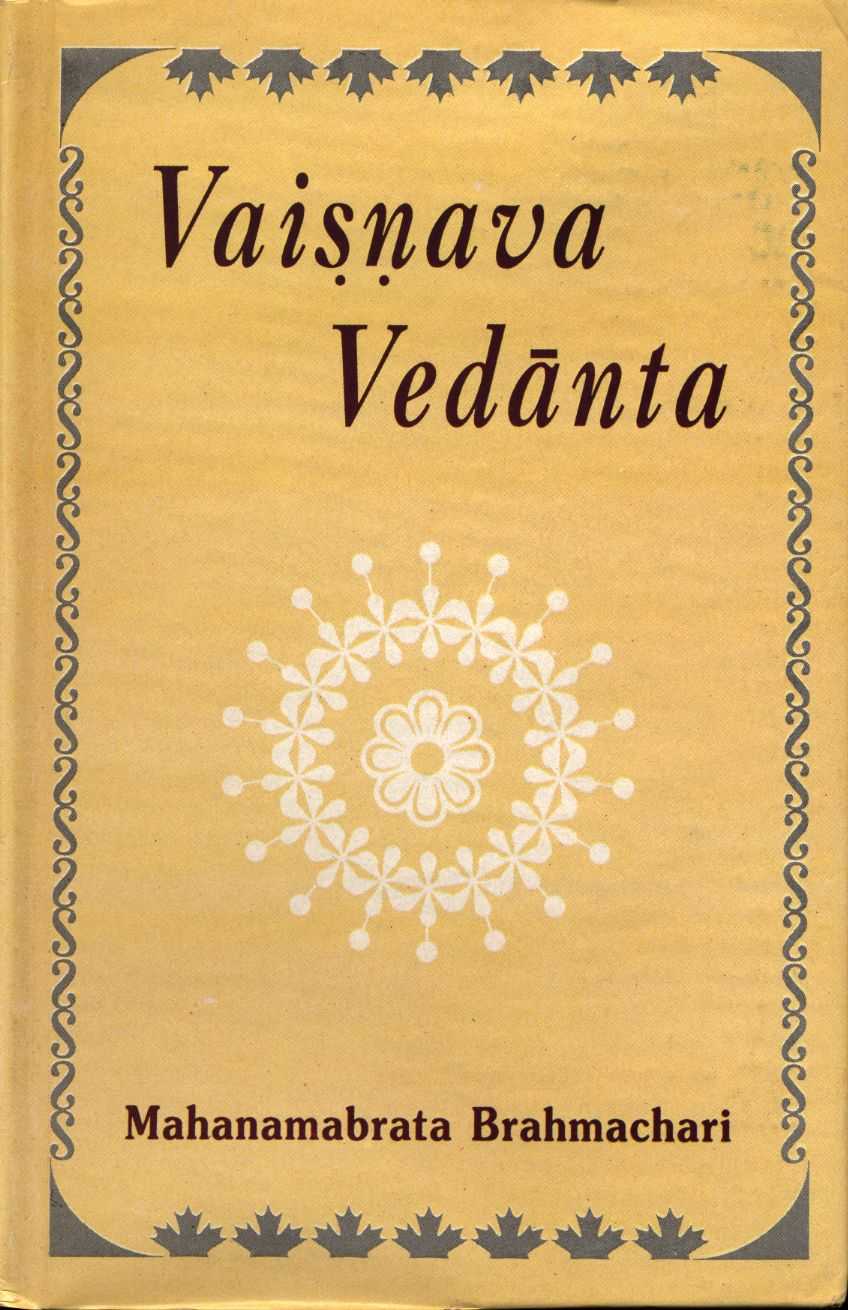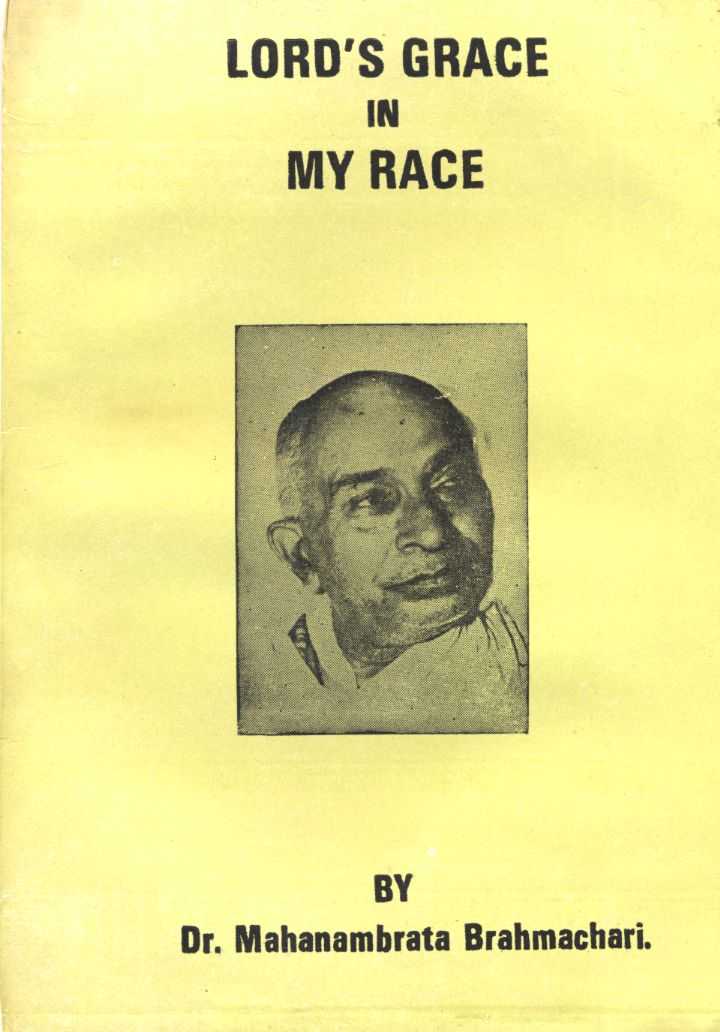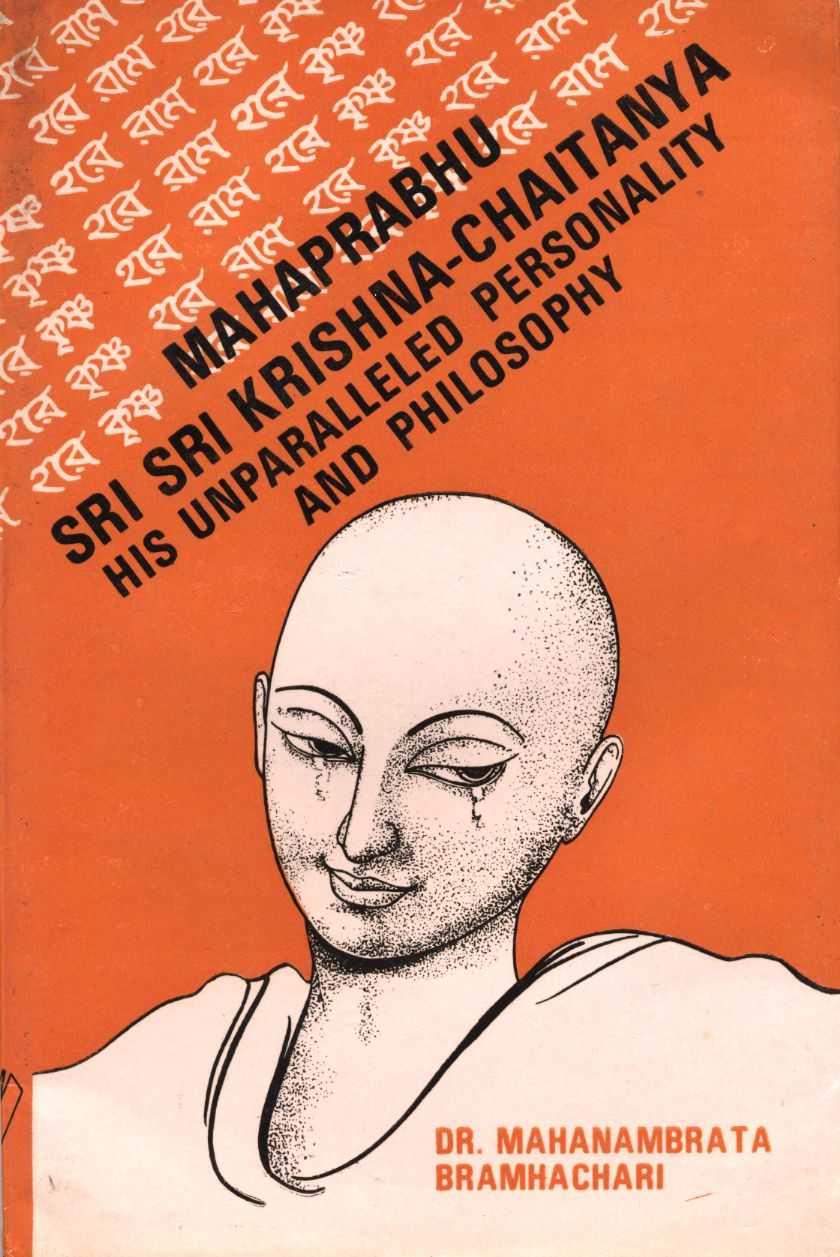Mahanamabrata Brahmachari
Vaisnava-vedanta.
2nd edition. 20, 302 pages. 1994.

This is a revised version of Dr. Brahmachari's PhD thesis at the
University of Chicago (1937). It is a wonderful introduction to
the thought of Sri Jiva Goswami in comparision to that of Sri Sankara
and Sri Ramanuja. This is a genuine classic of Vaisnava
philosophy. From the introduction:
"When Professor Whitehead says that the "general characteristic of the
European philosophical tradition is that it consists of a series of
footnotes to Plato," he, of course, uses the word "footnote" as a
metaphor, since we all know that there are a good many European
philosophers, dead and alive, from the great Stagyrite to Bertrand
Russell who are fundamentally in disagreement with Plato. But
when it is said that all Indian philosophies are but a series of
footnotes to the Upanisads, the term "footnotes" need not be taken in a
metaphorical sense. since what is stated is a fact literally true,
which no philosopher of India would ever deny. One can say, and
very justly, that the philosophy of India has been written once and for
all by the seers of the Upanisads. And this is so because of the
fact that the Upanisads are the spontaneous expressions of the deepest
intuitions of the ancient sages and not dry fabrications of purely
discursive intellect. Like the expressions of profound aesthetic
and mystic intuitions, the texts of the Upanisads embody experiences
which are flexible, free, and broad. Thus they have remained the
inexhaustible source of information and inspiration, profoundly rich in
their suggestiveness and implications, for the use of the philosophers
throughout the ages."
Price:
$16 plus shipping and handling (USA, Canada, Mexico)
$21 plus shipping and handling (elsewhere).
USA:
Elsewhere:
Lord's Grace in My Race,
Dr.
Mahanamabrata Brahmachari. (6), 71 pp. (1987) (Softbound)

This is the fascinating story of Dr. Brahmachari's trip to the USA in
1933 and his stay in the USA until 1939. During his stay he met
many seminal thinkers and completed a dissertation (Vaisnava Vedanta)
at the University of Chicago. His journey and experience
represents an important and often forgotten stage in the movement of
Caitanya Vaisnavism from India to the West.
Excerpt:
"What?" said an acquaintance as I was about to sail from Bombay, "going
to America and that without friends. You are going to die there.
I am sure."
"Why, what do you mean?" I asked.
"My dear poor monk," he said. "Do you imagine that America is
like India where people are hospitable every where? Far from
that; the people of America, you should know, are not human
beings. They are so many machines or parts of machines which are
manipulated twenty-four hours each day. A man treats his fellow
man as part of the machine. If you ask an American in the
street for your direction, he will have no time to reply. You
will find the people there swallowing their breakfasts in the morning
and hurrying off to factories to work fourteeen hours a day and then
eating in restaurants and sleeping in hotels. That is American
life. No homes, no families, no domestic virtues. You must
not even expect human treatment from an American. You are going
to a country not of men and women but of machines and
mechanists." These were not strictly true, however.
With these sombre warnings from my so-called well-wisher and possessing
very little money, I set sail from Bombay for the United States on an
Italian ship Cente Rossee in
August, 1933.
$4 (USA) and $9 (Outside)
USA:
Outside:
Mahaprabhu Sri Sri
Krishna-Chaitanya:
His Unparalleled Personality and Philosophy by Dr. Mahanamabrata
Brahmachari. iii, 235 pp. (1986, Softbound)
Excerpt:
Precisely five hundred years ago Mahaprabhu came down from his
celestial abode and brought about a heavenly unification of mankind,
irrespective of caste, creed, and race, irrespective of the highly
luxuriant or the poverty-stricken and irrespective of the "haves" and
the "have-nots." He was God but in the disguise of a lover of
God. He loved God profoundly and recognised keenly and truly the
sparks of God in each and every created being. He ushered in a
spiritual regeneration under the banner of "Para-" (higher) love and
tranquility. He was the hero of Nabadwip and enlightened the
world by the exquisite beauty of his person. He attracted large
crowds wherever he went by the all-soothing appeal of his unique gospel
of transcendental love, Only two arms he had, yet they were
all-embracing and with their charming embrace he drew all people
towards him under one roof of Universal Brotherhood. His
teachings and preachings can be said to consist of only one phrase
"Love God and Love Man." To illustrate the power of his philosophy of
love, we would like to sketch an outline of the time of his descent on
this earth. ...
$14 (USA) and $19 (Outside)
USA:
Outside:
Back



